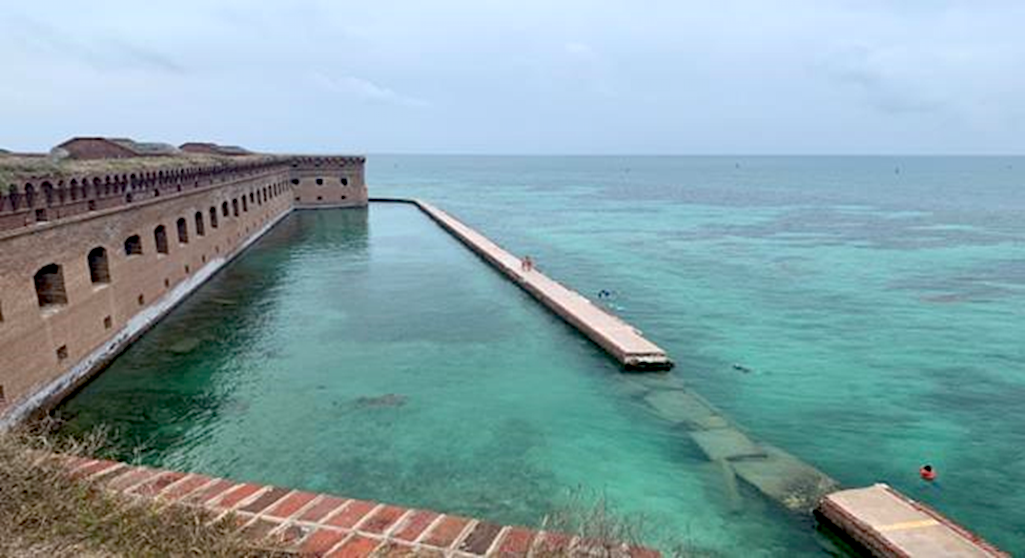
The National Park Service is preparing to repair hurricane damage to the counterscarp that protects Fort Jefferson at Dry Tortugas National Park/NPS
A project to repair damage to Dry Tortugas National Park from Hurricane Irma in 2017 and Hurricane Ian in 2022 requires the relocation of roughly 450 corals.
The work is to repair sections of the counterscarp that surrounds Fort Jefferson, a 19th century fort. This massive, enclosed hexagonal structure built from 16 million bricks became one of the most geographically desirable military structures in America’s arsenal, along with becoming the largest structure built from brick in the Western Hemisphere. Named after the third president of the United States, Thomas Jefferson, the fort at the height of its occupation had as many as 2,000 military personnel and civilians who called it home. With blacksmiths, cooks, a doctor, and others with specialized skills, the fort functioned almost like a miniature city.
Hurricanes Irma and Ian damaged sections of the counterscarp.
"Typically, visitors are able to walk around the full perimeter of the counterscarp, a pathway that was historically used for recreation during the period of significance," the Park Service noted in the environmental assessment prepared for the project. "As a result of Hurricane Irma in 2017, visitor access has been limited due to unsafe conditions with portions of the counterscarp inaccessible. The counterscarp was instrumental in the early construction of the fort and currently prevents wave action from damaging the fort walls, called the scarp."
"...Without the repairs, the fort would continue to deterioriate, exposing the main structural elements of the fort, further restricting pedestrian access," the EA adds. "Dredging [of sand deposited by the two hurricanes] is needed to restore water circulation within the moat and allow for continued unobstructed park and recreational use of the docks and finger piers and slips."
Before the work can begin, though, hundreds of corals within the project area need to be moved so they won't be damaged or destroyed. The project area is within the range of seven threatened coral species, and within designated critical habitat for elkhorn and staghorn corals. According to the EA, "the majority of corals in the proposed work area are attached to artificial surfaces such as brick, mortar/cement/concrete, sheet pilings, metal and/or treated lumber, and are not attached to hardbottom substrate."
The work to relocate the corals is expected to be completed by April, after which the repairs would begin.
Public comments on the draft EA were collected in January and February 2022. The final EA, which can be found here, is open to public comment through April 10.


